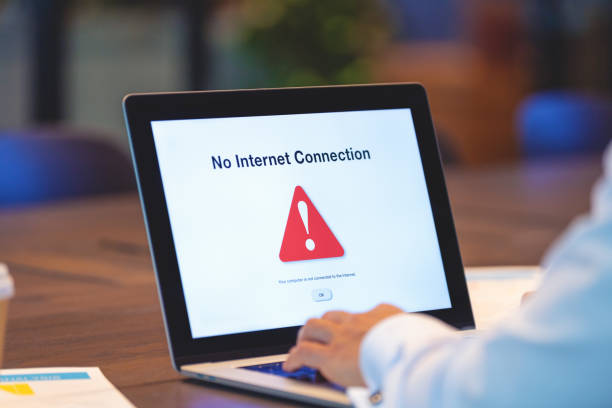Seeing the dreaded “IPv4 connectivity No internet access” message can spark instant frustration. Whether you are trying to stream a movie, join a video call, or manage critical systems, this error halts everything. It’s a common problem that affects households, workplaces, and even large data centres. Fortunately, it’s usually fixable with a bit of troubleshooting. In this blog, we will explain what this error means, explore the most common scenarios that trigger it, and walk you through practical steps to restore your internet connection, whether you are a casual user or an IT professional.
Common Causes of IPv4 Connectivity: No Internet Access
This indicates that your device will not connect to the internet using its IPV4 settings. A single typical reason is that there is an issue with your modem or router. Perhaps you should restart it or obtain an update to the firmware. Secondly, it may be a problem with the Ethernet cable or a weak Wi-Fi connection.
According to best IPv4 broker, in some cases, the problem lies in the network settings of your computer, such as an incorrect IP address or DNS. Blocking may also take place due to the presence of outdated or missing network drivers.
And in some extreme situations, the internet service provider (ISP) might be out of service or at least restricting it. Lodging the specific cause will make you rectify the problem in a shorter time and avoid spending time on speculation.
How to Fix IPv4 No Internet Access: Step-by-Step
1. Restart Everything
The first thing to do is to power cycle the modem, the router, and your computer. Disconnect all the devices approximately after 30 seconds and reconnect them. This refreshes your network equipment and makes temporary errors clear. Also, reset your connection by flushing your DNS and refreshing your IP by using Command Prompt (ipconfig /flushdns, then ipconfig /release, and then ipconfig /renew).
2. Network Adapter Settings Check
Make sure that you rent IPv4 address on your network adaptor. Open Network and so on, and a sharing centre, and then open the change adapter settings. Right-click on your connection, select Properties and make sure that the box with the name: Internet Protocol Version 4 (TCP/IPv4) is marked. Then click it and then hit Properties and ensure both IP address and DNS server are set to obtain automatically unless there is a need to set it to static.
3. Update Drivers of Networks
Connection problems when you lease IPv4 addresses can be a result of ineffective or damaged drivers. Go to Device Manager and click the network adapters. Just open it, right-click your network adapter and select the option to update. Just uninstall the driver and restart your PC, and Windows will install it. You can simply go to another device and download the newest driver from the manufacturer’s website and then install it manually.
4. Use Windows Network Troubleshooter
The diagnostics tool that comes with Windows can help detect and resolve common problems in the network. Click on Settings, then on Network & Internet and then on Status, and finally click on Network troubleshooter. It will check such problems as IP conflicts or adapter problems. Look at the messages: this could indicate how to fix it, or something more specific went wrong and needs to be redone manually.
5. Manual Static IP and DNS
In case of automatic settings problems, simply type a static IP and DNS manually. In the case of DNS, consider: 8.8.8.8 and 8.8.4.4 are provided by Google. To identify your correct gateway and subnet mask, you need to log in to the command prompt and search for your adapter. Put those values in your IPv4 settings induced by Properties to avoid DHCP problems or misconfiguration of the DNS.
Advanced Fixes for Tech-Savvy Users
There may be some super-fixes that can regain or enhance when you buy bulk IPv4 address block. The first step is to re-configure your router with custom firmware such as OpenWRT or DD-WRT- this gives the opportunity to have greater control of the traffic and security features.
To improve security, it would also be a good idea to deploy robust firewall policies and port blocking, where data traffic can be controlled and undesired traffic prevented. Deep-seated network problems, such as corrupted files or clashing programs, can be solved by resetting Winsock on Windows-based systems.
Such actions are best suited to users who do not need simple repairs. First, make a backup of your settings; second, be cautious in making changes to prevent any interruptions. When properly executed, these tweaks can enhance speed, security, and stability to a considerable extent.
How to Prevent This Issue in the Future?
To prevent the issue of no Internet Access in the future with IPv4, it is essential to keep network drivers up to date and maintain Windows to remain current. Configure your router to use DHCP to automatically assign an IP address so that it does not need to look at manual settings. Google or Cloudflare DNS.
Restart your modem and router every now and then to ensure they perform. There should not be too many devices on the same network, which will only cause IP clashes. Hardware protection during a power outage can be done with surge protectors. Finally, it may be necessary to use static IP addresses in only the essential devices to decrease IP leasing problems and maintain consistent connections.
Get Reliable IPV4 Addresses for your Business by Visiting us
Still struggling with IPv4 network issues or need reliable IPv4 addresses for your business? At IPV4 TradeHub, we help companies and IT professionals buy, lease, and manage IPv4 blocks securely and efficiently. With global reach and expert support, we simplify the complexity of IPv4 transactions and empower your connectivity needs. Don’t let IPv4 shortages or misconfigurations slow you down. Get in touch today and ensure uninterrupted access and performance!
